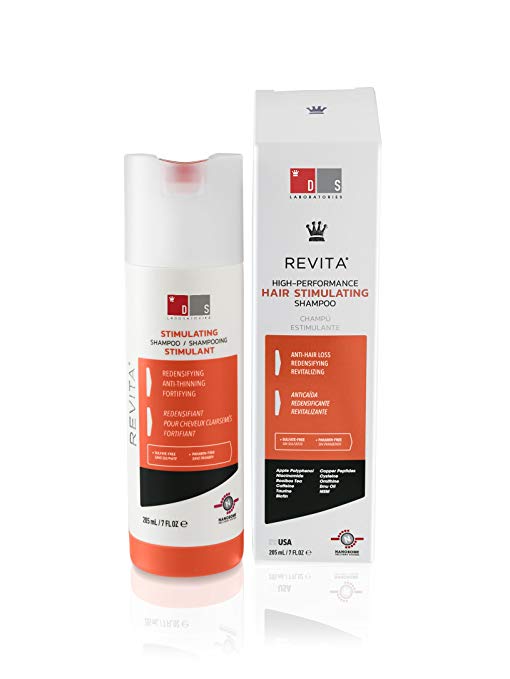
Page Contents
You may not have heard of seborrheic dermatitis. If you have, you may be worried that it can cause hair loss. The short answer is, yes, seborrheic dermatitis can cause hair loss.
That said, many people can get this scalp disease without even temporary hair loss. Of the millions of people who deal with seborrheic dermatitis every year, many barely notice they even have it.
What Is Seborrheic Dermatitis?
Seborrheic dermatitis goes by a few other names. One is seborrheic eczema, as it is sometimes considered to be a type of eczema that affects your scalp. It is also called dandruff in adults, usually when it is in its mild form, and cradle cap when babies and infants have it.
Blepharitis is another type of seborrheic dermatitis that targets your eyelids and eyelashes. Seborrheic blepharitis makes eyes feel itchy, causes redness on the eyelids, and puts dandruff-like scales on the eyelashes.
This scalp problem is fairly common for people to deal with, characterized by flaky areas on your scalp. In moderate to bad cases, these flakes cover a solid area, are yellowish, the skin underneath them is reddened and irritated, and the area is also often greasy in appearance.
In some cases, the redness and flakes can extend to part of your face as well, not just your scalp. In particular, this happens around your ears, nose, eyebrows, and eyelids. In rare cases, seborrheic dermatitis may affect your upper chest, back, armpits, and groin.
There is some debate on what causes seborrheic dermatitis, but most places say it is a type of yeast infection of the skin. Those with an oily scalp and skin have greater chances of having seborrheic dermatitis.
The areas that tend to be the most affected are the areas of your scalp and face that produce the most natural oils. Basically, oily areas provide a place for the yeast to grow.
The two most common age ranges to get it are infants under one year old and adults between 30 to 60. However, you can get seborrheic dermatitis at any age. In adults, it tends to be a condition that flares up periodically, with sometimes years in between.
Does Seborrheic Dermatitis Cause Hair Loss?
Most cases of seborrheic dermatitis are fairly mild. You may notice nothing more beyond some dandruff. In severe cases, however, some of the hairs in the affected area may fall out. If you get your seborrheic dermatitis treated, these hairs usually grow back.
If you let it continue without getting treated, however, it can cause permanent hair loss. This is partially because, the longer it stays, the more likely your hair follicles themselves will become inflamed. If the swelling in your follicles reaches a certain point, it will cut off circulation to them.
The result is that your follicles will start to die. They will lose their hair strand to conserve energy long before this happens. This may make you fear your follicles have died even when they are still alive enough to be able to grow back once the inflammation is gone. Unfortunately, once they are truly dead, there is no hope of a hair growing back in that area.
Also, seborrheic dermatitis can block your follicles on top where the hair comes out by dandruff clogging up the holes. With a bit of extra effort, your hair can usually push its way out anyway. This can still cause ingrown hairs and is very taxing for your follicles.
Finally, seborrheic dermatitis makes your scalp very itchy. If you give into this urge, it only increases your scalp’s irritation. This makes the itching worse and often leads to scratching hard enough to make your scalp bleed.
This is very damaging to your follicles and, thereby, your hair growth. It also can allow your scalp to become infected, which is even more destructive and often requires extra treatment. In fact, it is the itching that is primarily responsible for hair loss.
How Is Seborrheic Dermatitis Treated?
Cradle cap often goes away on its own within a few months. However, occasionally babies can get seborrheic dermatitis in their diaper area. On the scalp, regular washing with regular baby shampoo combined with gently brushing away the flakes is usually all that is needed.
That said, you’re advised to speak to your doctor if your infant has any feverishness, oozing, swelling, or apparent pain in the area. The same goes for any adults with seborrheic dermatitis.
Shampoo is a great option for treating seborrheic dermatitis, and there are shampoos specifically for this. Most shampoos that say they treat dandruff have something in them to fight the yeast that causes seborrheic dermatitis.
There are also OTC-strength hydrocortisone creams and gels for the areas of skin on your face that may be affected. If your hair is short enough to easily allow it, these can be applied on your scalp as well.
If the shampoo or the cream are not enough for your seborrheic dermatitis, your doctor can prescribe some prescription-grade shampoos or creams. Capex (fluocinolone) is a topical corticosteroid that is sometimes used for this.
Other things your doctor may prescribe are antifungals and calcineurin inhibitors, the latter of which is meant to reduce inflammation. These are only meant to be used over a short period of time.
Natural treatments haven’t been proven to work for seborrheic dermatitis. That said, some people have had success using tea tree essential oil, aloe vera, and apple cider vinegar.
Doctors say it is not contagious, so there is no fear of it spreading from one person to another. For sanitary reasons, it is best for the affected person to use their own hairbrush or comb and to wash this regularly.
How To Avoid Seborrheic Dermatitis
Unfortunately, seborrheic dermatitis does tend to run in families, and there is nothing you can really do about that part. If you have family that struggles with dandruff, you should be extra careful about keeping your scalp clean.
Because oily areas are a breeding ground for the bacteria that causes seborrheic dermatitis, the first thing you should do is ensure your scalp gets cleaned often. As mentioned, this scalp condition can flare up again years after getting it the first time.
Continually using a shampoo that treats seborrheic dermatitis, even when you are showing no symptoms, will help prevent this from happening and moderate it if it occurs anyway. Use shampoos that are for dandruff.
Stress and hormonal changes also seem to trigger a flare-up of seborrheic dermatitis. So, try to avoid or at least manage your stress and avoid things that may alter your hormones. For women, birth control and pregnancy should make you extra cautious.
Also, some medications are suspected of causing you to be more prone to flare-ups. Some of these are interferon, lithium, and psoralen.
Fatty foods, especially processed ones, can make your scalp and skin more oily. These should be avoided if you want to avoid seborrheic dermatitis.
Final Thoughts
Though severe cases of seborrheic dermatitis can be painful and scary, you may not even notice you have a mild case of it until you see little white flakes on your shoulders. However, it is important to avoid confusing seborrheic dermatitis with other things.
Most commonly, seborrheic dermatitis is confused with psoriasis, rosacea, allergic contact dermatitis, and tinea versicolor fungal infections. The last of those is also a type of yeast infection, just like seborrheic dermatitis.
Sometimes a dermatologist can tell just by looking at your scalp which type it is. If there is doubt about which condition you have, a doctor can do a skin scraping test, small biopsy, blood, and/or urine tests.
The sooner you know for certain, the sooner you can treat your seborrheic dermatitis. As this can be very nasty-looking on your scalp, on top of damaging your hair to the point you can have hair loss, you should deal with it right away.






